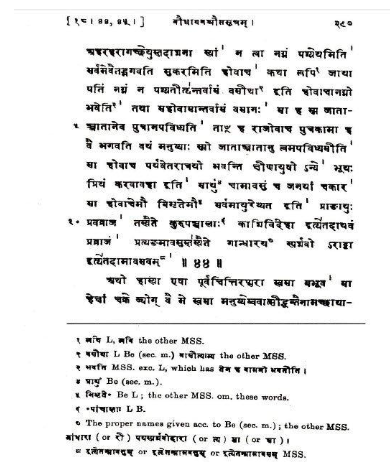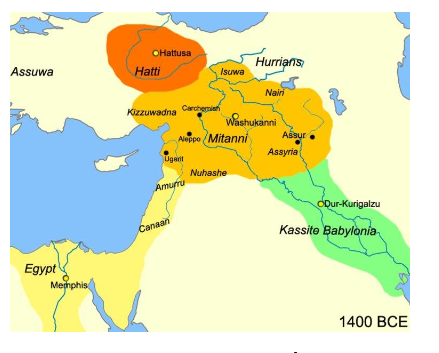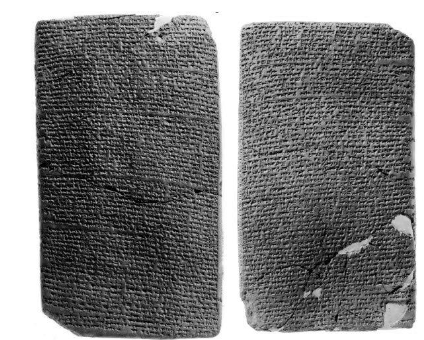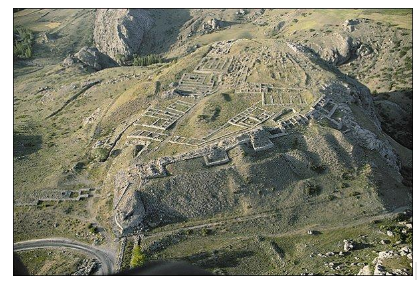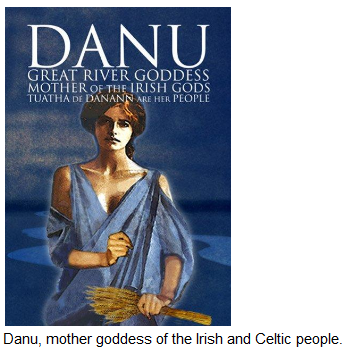Aryan Invasion Myth: How 21st Century Science Debunks 19th Century Indology
The Aryan Invasion Theory (AIT) needs no introduction. It is the bedrock upon which Indian history has been written. Its central thesis has three main components:
- India’s original inhabitants were “dark-skinned” Dravidians, who built a peaceful, highly developed, near-utopian urban civilization in western India and present-day Pakistan: the so-called Harappan or Indus valley civilization.
- India was invaded and conquered from the West by a nomadic people called the Indo-Aryans around 1500 BCE. These Indo-Aryans were of European origin (hence white-skinned), and spoke Vedic Sanskrit. They destroyed the indigenous Dravidian civilization, subjugated the natives, and forced them to migrate to India’s South.
- The Indo-Aryans then composed the Vedas, and imposed Hinduism and the caste system upon the hapless Dravidians and other indigenous peoples of India.
First propounded by Max Müller, the AIT has been regarded as self-evident since the 19th century. In the late 20th century, it was refined into what is now known as the Indo-Aryan Migration theory (IAMT). According to this model, the Indo-Aryans migrated into India rather than invaded it, which nevertheless had the same effect on the indigenous peoples: their subjugation and the imposition of Indo-Aryan religion (Hinduism) and culture.
The opposing view: Indigenous Aryans
The opposing view, known variously as the Indigenous Aryans theory (IAT) and the Out of India theory (OIT), rejects the AIT/IAMT (henceforth AIT). It posits that the Indo-Aryan people and their languages originated in the Indian subcontinent and that the Indus valley civilization (Sindhu-Sarasvati civilization) was the Vedic civilization, not a Dravidian civilization as claimed in the AIT.
Proponents of this theory cite archaeological evidence of civilizational and cultural continuity, and Indian literary sources such as the Puranas, the Mahabharata and the Ramayana – which contain extensive genealogies of kings that date back thousands of years – and which mainstream scholars reject as mythology.
The question of the origin of the Indo-Aryans has become the most controversial, emotive, and polarizing debate in India today. It pits these two diametrically opposing narratives against one another.
Scientific inquiry is the only way forward
The scientific method requires researchers to take a theory seriously until it can be irrefutably demonstrated to be false using systematic observations, carefully controlled and replicable tests and experiments, scientific techniques, the application of logic, and hard evidence. Science is not concerned with narratives, ideologies, beliefs, dogma, or opinions. Science deals in empirical or measurable evidence and in hard facts. Conclusions are drawn based on scientific evidence, and can change in the face of new evidence.
While India’s history textbooks continue to teach antiquated and unscientific 19th century concepts and ideas well into the 21st century, the world has moved on.
The interrelated fields of population genetics, comparative genetics, archaeo-genetics, genomics, and genotyping have made it possible to gain an unprecedented insight into the nature of human genetic diversity. These are rapidly evolving disciplines, which, in the coming years and decades, will revolutionize our understanding of how our species evolved. These advances in genetics, as well as new archaeological investigations, have brought forth new evidence and presented us with new facts.
What is the new evidence? What new facts have emerged? Let us find out.
How old is Indian civilization? Archaeological evidence
Radiocarbon dating has demonstrated that Bhirrana, a site on the banks of the now-defunct Sarasvati River, existed in the 6th millennium BCE (8,000 years before present). A more recent study proves that Bhirrana and other settlements in the Sarasvati valley are at least 9,500 years old, and possibly older [1].
Sarkar et al’s study found that the Sarasvati was a mighty river along which Indian civilization’s earliest settlements were founded. It states that the monsoon declined monotonically after 5,000 BCE, gradually weakening the Sarasvati, which is known to have eventually dried out to a large extent around 1,500 BCE. The Harappan civilization thus gradually deurbanized due to declining monsoons, rather than collapsed abruptly. Smaller settlements continued, and eventually dispersed toward the Himalayan foothills, the Ganga-Yamuna plain, Gujarat, and Rajasthan.
These results were obtained by studying just one site on the Sarasvati’s dry paleo-channel. More than 500 such sites are known to exist along the ancient river’s course, and there may be many more. Investigating more sites will give a better idea of the age of the civilization and possibly demonstrate that it is even older.
Dating the Rig Veda using Sarkar et al’s study
The Sarasvati is extensively mentioned in the Rig Veda, India’s foundational literary text. It is referred to as “greatest of rivers”, “glorious”, “loudly roaring”, and “mother of floods”. This clearly refers to a mighty river in its prime, not one in decline.
This falsifies the AIT account that the Rig Veda was composed after a purported Aryan invasion/migration circa 1,500 BCE, and indicates that it was composed closer to 5,000 BCE when the river was last in its prime per the results of Sarkar et al’s study. This raises serious questions about the AIT’s validity.
India’s “mainstream” historians dismiss the Rig Veda as mythology. This is a naive and subjective assumption that betrays an unscholarly bias on their part. If the Rig Veda is mythology, then so are Herodotus‘ fanciful and inaccurate Histories. Herodotus, however, continues to be cited as a reliable historian. This smacks of double standards. The Rig Veda is certainly less fanciful than Herodotus’ Histories. Moreover, it is a veritable treasure that gives us the earliest literary insight into human society and thought. As such, it must be taken seriously.
Archaeology demonstrates Indian civilization’s continuity
The renowned archaeologist Professor B. B. Lal, whose distinguished career spanned more than half a century, refutes the AIT, based on his extensive archaeological discoveries and research. He asserts that there is no evidence for warfare or invasion, and that the theory of Aryan migration too is a myth. He further states that “Vedic” and “Harappan” are respectively literary and material facets of the same civilization.
In his book “The Rigvedic People: Invaders? Immigrants? or Indigenous?”, Professor Lal gives extensive archaeological evidence that many of the traditions and customs prevalent in the Sindhu-Sarasvati civilization continue to exist in modern India [2]. He demonstrates that Yoga, the Shiva-linga-cum-yoni, the use of vermilion (sindura) in married women’s hair partition, the use of spiraled bangles among women in Haryana and Rajasthan, the folk tale of the thirsty crow, the Namaste greeting, Lord Shiva’s trident, and many other aspects of contemporary Hinduism and Indian culture originated in the Sindhu-Sarasvati civilization. Similar evidence is provided in Michel Danino’s seminal work “The Lost River: On The Trail of the Sarasvati” [3].
This refutes the theory that the Sindhu-Sarasvati civilization was destroyed and supplanted with a “foreign” Hindu culture and civilization, and proves that modern India is a continuation of that ancient civilization. Dr. Vasant Shinde, another internationally renowned archaeologist, concurs.
Genetic evidence demolishes the Aryan Invasion Theory
The science of genetics has revolutionized the study of ancient history and given researchers an unprecedented ability to uncover the details of humanity’s past. India has lagged behind in genetic research, and the government of India has in the past prohibited foreign researchers from collecting genetic samples of Indians. This restriction has been removed of late, and, as a consequence, a new picture of Indian history is emerging.
Consider the following:
- This research paper demonstrates the absence of any significant outside genetic influence in India for the past 10,000 – 15,000 years [4].
- This research paper excludes any significant patrilineal gene flow from East Europe to Asia, including India, at least since the mid-Holocene period (7,000 to 5,000 years ago) [5].
- This research paper rejects the possibility of an Aryan invasion/migration and concludes that Indian populations are genetically unique and harbor the second highest genetic diversity after Africans [6].
These three research papers demolish the AIT. They conclusively and irrefutably prove that there was no Aryan invasion circa 1500 BCE.
This is just the beginning of the revelations.
The family that conquered the world … originated in India
In genetic terminology, a “haplogroup” is a group of individuals that share a common ancestor with a particular genetic mutation. A haplogroup pertains to a single line of descent which typically dates back several thousand years. In other words, a haplogroup is a large, extended family or clan, all of whose members have a shared ancestry. There are two types of haplogroups: Y-chromosome (patrilineal) haplogroups, and mtDNA (matrilineal) haplogroups. Haplogroups are identified by letters of the alphabet (A, B, C, etc.) and sub-groups are denoted by letters and numbers (A1, A1a, etc.).
The Y-chromosomal (patrilineal) haplogroup R1a1a (also known as R-M17) is the world’s most successful extended family. Its members number in the high hundreds of millions, possibly over a billion. It is widespread across Eurasia, with high concentrations in Russia, Poland and Ukraine, as well as in the Indian subcontinent and the Tuva region of Asiatic Russia.
R1a1a is closely associated with the spread of Indo-European languages across Eurasia. In India, R1a1a is identified as the haplogroup that represents the Indo-Aryan people. It records an uninterrupted lineage of males, from father to son, all of whom have descended from one common male ancestor.
This research paper demonstrates that the R1a1* haplogroup, which is found throughout Eurasia, originated in India [7]. Here, the * refers to all subgroups of the parent haplogroup R1a1.
This more recent study published in 2015 confirms and refines the results of [7], demonstrating that the oldest examples of the haplogroup R1a are found in the Indian subcontinent and are approximately 15,450 years old [8].This is a momentous discovery. It proves that:
- The R1a haplogroup originated in India.
- The Indo-Aryan people have lived in India for at least 15,450 years, which invalidates the theory that the Indo-Aryans invaded India 3,500 years ago.
- The hundreds of millions of members (possibly over a billion) of the R1a family living across the world today – a very large fraction of humanity – are all descended from one single male ancestor who lived in India at least 15,450 years ago.
This discovery demonstrates the close genetic (and hence linguistic and cultural) affinity of Indians with the Russian and Polish people, the Vikings and Normans, and with the ancient Scythians and Tocharians, among many others.
This is irrefutable scientific proof that not only did the Indo-Aryan people originate in India over 15,450 years ago, but also that they expanded out of India and settled in lands far to the west in Europe. It thoroughly invalidates the AIT and IAMT.
Contextualizing contradictory genetic studies
While I have presented several research papers that invalidate the AIT, I would be remiss if I did not mention here that some other genetic studies claim that the AIT is correct. How does one interpret this?
The answer is simple: None of these other studies has been able to disprove the results of [7] and [8], namely, that the oldest examples of the haplogroup R1a are found in the Indian subcontinent and are at least 15,450 years old. None of them has been able to find older examples of R1a anywhere else in the world.
As long as the results of [7] and [8] stand, the AIT remains invalidated.
The myth of the Aryan-Dravidian divide and the ‘high caste’-‘low caste’ divide
The supposed Aryan-Dravidian divide is a myth. This Nature report, which cites three genetic studies, demonstrates that most Indians are genetically alike, belying the hypothesis of an Aryan-Dravidian dichotomy [9]. Other studies have also demonstrated that people in north India are no different from those in the south and that all share the same genetic lineage.
The R1a1a haplogroup is found in high frequencies in north Indians as well as south Indians, in tribal communities, and in ‘low castes’ as well as in ‘high castes’.
Claims that the Dravidians belong to a separate, non-Hindu civilization are also discredited by ancient Tamil Sangam literature, which dates back to c. 300 BCE. The Mahabharata is mentioned in the oldest Tamil Sangam literature. The Vedas and the Ramayana are also mentioned in Sangam literature. Sangam literature mentions the whole of India, starting from lands to “the north of the Himalayas”, which contradicts the claim that the Dravidians were confined to the south of India.
The above evidence, taken together, demonstrates the genetic and cultural continuity of India from the north to the south, and proves that the artificial concepts of the “Aryan-Dravidian divide” and the ‘high caste’-‘low caste’ divide have no basis in fact.
Literary Evidence for Westward Indo-Aryan expansion
Consider the Baudhayana Shrauta Sutra, a Vedic text. Baudhayana Shrauta Sutra 18:44 records:
“Amavasu migrated westward. His people are Gandhari, Parsu and Aratta.”
This refers to a Vedic king called Amavasu, whose people are the Gandhari (Gandhara – Afghanistan), the Parsu (Persians) and the Aratta, who are tentatively identified as living in the vicinity of Mt. Ararat, which is located in Turkey (eastern Anatolia) and Armenia.
Afghanistan (Gandhara) was historically part of the Indian civilization until the Islamic invasions. The name “Persia” comes from the ancient Parshva people (an Aryan clan). The word “Parshva” is derived from the Sanskrit/Avestan (Old Persian) word “Parshu”, which means “battle-axe”. There are clear linguistic and cultural similarities between India and Persia.
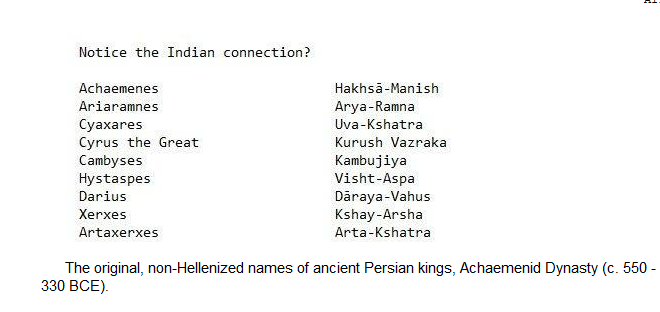 The traditional Armenian name for Mt. Ararat is Masis. It is named after the legendary Armenian king Amasya. The name “Amasya” is linguistically related to the name “Amavasu” of the Indian king recorded in the Baudhayana Shrauta Sutra. This establishes literary evidence for the westward expansion of Indo-Aryans, via Afghanistan, to Persia, Armenia and Anatolia.
The traditional Armenian name for Mt. Ararat is Masis. It is named after the legendary Armenian king Amasya. The name “Amasya” is linguistically related to the name “Amavasu” of the Indian king recorded in the Baudhayana Shrauta Sutra. This establishes literary evidence for the westward expansion of Indo-Aryans, via Afghanistan, to Persia, Armenia and Anatolia.
The German Indologist M. Witzel and the Marxist historian Romila Thapar have in the past misinterpreted this passage to mean that Amavasu migrated eastward, which caused a heated controversy.
Archaeological Evidence for Westward Indo-Aryan expansion
The ancient kingdom of Mitanni, located in present-day Syria and Anatolia, had an Indo-Aryan, Sanskrit-speaking ruling class. Mitanni kings had Indo-Aryan names.
The oldest recorded (Vedic) Sanskrit words are found in a horse training manual by a Mitanni horse master named Kikkuli. Although the text is written in the Hittite language, it appears that Kikkuli was not familiar enough with that language to use technical terms, which made it necessary for him to use the terminology of his own language (Vedic Sanskrit) instead.
Inscribed clay tablets discovered in Boğazkale, Anatolia (Turkey), record a royal treaty & invoke the Vedic gods Indra, Mitra, Nasatya & Varuna as witnesses. The Boğazkale clay tablets are dated to c. 1380 BCE. This is around the same time as Kikkuli’s horse training manual.
The Mitanni belonged to the Indian-origin haplogroup R1a1a. This is clear evidence of a large-scale westward expansion of Sanskrit-speaking Indo-Aryans, and their presence as the ruling aristocracy in lands thousands of kilometers west of India. This quashes the asinine claim that the first speakers of Sanskrit were Syrians, a claim that would be laughable were it not portrayed as serious journalism in a mainstream publication.
Genetic Evidence for Westward Indo-Aryan expansion
Recent DNA evidence shows that Europe experienced a massive population influx from the east, beginning around 4,500 years from the present [10]. Several haplogroups were involved in this demic expansion, including the Indian-origin R1a1a. This was almost a total replacement event, which indicates that Indo-Aryans, among others, expanded westward into Europe and to a large extent replaced indigenous European males and their Y-chromosome strata.
This indicates military expansion. Conquest.
This genetic evidence indicates that several Y-chromosomal (patrilineal) lineages, one of which was the Indian-origin R1a1a, gave rise to the modern European population. Out of these lineages, R1a1a is the most widespread and numerous.
The children of Goddess Danu.
The primordial Rig Vedic river goddess Danu is the mother/progenitor of the Danava clan of Indo-Aryans. The Danavas revolted against the Devas, and were eventually defeated and banished. As it turns out, that was far from the end of their story.
The word dānu means “fluid, drop” in Rig Vedic Sanskrit. The Avestan (old Iranian) word for “river” is “dānu”. The Scythian (Saka/Shaka) & Sarmatian words for “river” are also “dānu”.
Now consider this: linguistically, the names of the European rivers Danube, Dnieper, Dniestr, Don, Donets, Dunajec, Dvina/Daugava, and Dysna are all derived from the Rig Vedic Sanskrit root word “dānu”. These rivers flow across eastern & central Europe. These rivers, all named after the Rig Vedic goddess Danu, seem to trace the gradual westward migration through Europe of the Danava clan of Rig Vedic Indo-Aryans.
So where did the Danavas eventually end up?
According to Irish & Celtic mythology, the Irish & Celtic people are descended from a mother goddess – a river goddess – called Danu. The ancient (mythological) people of Ireland are called the Tuatha Dé Danann (Old Irish: “The peoples of the goddess Danu”).
Is there genetic evidence to support this story? As it turns out, there is. The R1a1a haplogroup is rare in Ireland, at 2.5% of the population. This can be explained by the fact that Ireland has suffered many invasions since the Bronze Age, which would have led to the gradual replacement of the R1a1a haplogroup with those of the various invaders. The fact that R1a1a is still present in Ireland proves that people of Indo-Aryan origin settled there in the past.
What the mountain of new evidence indicates
It is clear that there is layer upon layer of archaeological, literary, linguistic, and, most importantly, genetic evidence that forms a consistent, repeated, and predictable pattern that debunks the Aryan Invasion Theory and supports the Indigenous Aryans Theory. These layers of evidence, taken together, paint a vast canvas and prove that:
- The Indo-Aryan people and languages originated in the Indian subcontinent.
- The Vedic civilization and the Indus valley civilization (Sindhu-Sarasvati civilization) are one and the same.
- The Rig Veda was composed closer to c. 5,000 BCE when the river Sarasvati was last in its prime, than to c. 1,500 BCE when it dried out. This makes the Rig Veda a strong candidate for being the world’s oldest known literature.
- Rather than being a religion of invaders, Hinduism is indigenous to India and has its origins in the very beginning of the Sindhu-Sarasvati civilization.
- North Indians and South Indians are genetically and culturally alike. The Aryan-Dravidian divide is a myth; it has no basis in fact. The ‘high caste’-‘low caste’ divide also has no basis in fact.
- Indian civilization is a continuous, unbroken tradition that dates back to the very beginning of the Sindhu-Sarasvati civilization, at least 9,500 years before present. This makes India not only the world’s oldest civilization, older than Mesopotamia and Egypt, but also the world’s oldest continuously existing civilization. This makes India the true Cradle of Civilization.
- Indo-Aryans carrying R1a1a lineages expanded westward thousands of years ago, conquering and populating territories as far west as Europe. They were the most successful conquerors in human history. Their descendants are the Slavs (Russians, Ukrainians, Czechs, Poles, Slovaks, Serbs, Croats, Macedonians, etc.), the Scandinavians, and many others.
In other words, the new evidence comprehensively debunks the 19th century’s colonial Aryan Invasion Theory and its late 20th century refinement, the Indo-Aryan Migration theory.
Will the new evidence set the controversy to rest?
The question of the origin of the Indo-Aryans concerns the very idea of India. It pits two diametrically opposing narratives against one another.
The mainstream AIT/IAMT narrative, which portrays Indo-Aryan (Hindu) culture as hegemonic, racist, intolerant, rapacious, and inegalitarian, imposes an Indian version of “white guilt” on persons of Indo-Aryan ancestry, and engenders deep resentment and a desire to right historical wrongs among persons of Dravidian and “Dalit” ancestry – which manifests itself in various forms such as separatism and rejection of Hinduism and Indian culture, among others.
This makes the AIT a powerful political tool which dovetails perfectly with the leftist, ‘secular’, and ‘liberal’ political narrative, as well as with the agendas of Dravidian nationalists, Dalit supremacists, missionaries, separatists, and other “Breaking India” forces, internal as well as external. As such, it has long been used to neatly divide India into dichotomous categories such as North and South Indians, Aryans and Dravidians, the fair skinned and the dark skinned, ‘high castes’ and Dalits, the privileged and the oppressed.
It is difficult to overstate how much the AIT has strengthened the leftist narrative. The left/secular/liberal ecosystem derives much of its strength and power from its decades-old stranglehold on Indian academia, especially in the humanities (but also in other fields). Leftist academics staff or control most of India’s humanities departments. Leftist historians and academics monopolize academic discourse in India and marginalize dissenting voices. The leftist clique has ensured that every school, college, and university textbook teaches the AIT.
India’s education system discourages students from asking questions and thinking on their own. This conditioning makes them accept the leftist narrative without question. As a consequence, several generations of Indians have grown up and spent their lives hating, or, at the very least, feeling ashamed of their culture and heritage.
The AIT gives leftist academics the ideal rationale for denigrating Indian culture, exhorting ‘lower caste’ students to reject Hinduism and rebel against ‘the establishment’, encouraging female students to reject Hinduism for being patriarchal and misogynistic, calling into question India’s right to exist as a nation, and supporting anti-national and separatist movements, all on academic and scholarly grounds. This is the modus operandi by which several generations of unquestioning and impressionable students have been indoctrinated and recruited into the leftist movement.
The AIT also gives India’s ‘liberals’ and secularists the perfect justification for promoting hatred and intolerance toward Indian culture while at the same time claiming to be liberal and progressive.
The AIT is thus the academic premise underpinning the entire spectrum of methods the various “Breaking India” forces employ to attack India’s culture and undermine India’s integrity. It is their trump card. Take it away, and they have nothing else left.
It is therefore vitally important for them that this theory remains the dominant narrative in India. This is the reason why, instead of investigating the Indigenous Aryans Theory (IAT) using all means available, India’s leftist historians and academics have for decades dismissed it out of hand as “Hindutva”. This is why they decry any attempt to alter the status quo (such as modernizing history textbooks) as “fascism” and “historical revisionism”, and why they have marginalized scholars such as the distinguished archeologist B. B. Lal, whose immense body of work has never been allowed to make it to Indian textbooks.
I therefore expect India’s “eminent” leftist historians to either ignore the results of the research papers and studies cited herein (as they have largely done thus far), or to respond with cherry-picked data and flawed logic as has long been their wont.
Some attempts to raise questions about the validity of genetic studies have already been made. Consider this opinion piece, wherein Romila Thapar declaims that genetics and DNA analysis are “not of much help to social historians” as, according to her, “Aryan is a social construct and therefore genetic information is unlikely to be useful unless the parameters defining the groups for analysis undergo some rethinking” [11].
Her Eminence could not be more wrong. The term “Arya” (which is anglicized to “Aryan”) is an ethnic self-designation, not a “social construct”. It is one that both the ancient Indians and Persians used for themselves. Ethnicities are ideally suited for genetic investigation. If there is any confusion about the meaning of this term, it is because ideologues like Thapar have used their academic positions to systematically obfuscate its real meaning and give it political and ideological color.
This article [11] is typical of India’s leftist academics: devoid of original research, based on other people’s work, presents a subjective opinion rather than hard results, and uses far-fetched and convoluted logic to make biased and untenable arguments that are unsupported by scientific evidence.
The way forward: India must take ownership of research
It is well-established that India’s population is genetically unique and harbors the second highest genetic diversity after that of Africa. Research into India’s genetics has not been given much importance and is still in its infancy. Much of it is authored by foreign authors and conducted from outside India. This must change. India must take ownership of the research into its past, the same way China has done for itself. In order to achieve this, India must do the following.
First, India must conceive and launch a large-scale project whose objectives are:
- To establish a detailed catalog of the genetic variation in India’s population.
- To correlate Indian genetics with those in other regions of Eurasia.
- To map migration patterns in and out of India.
To do this, India needs to develop world-class genetics research groups and establish state-of-the-art genetic testing laboratories. At present, Indian researchers have to send genetic material abroad for testing.
Second, the DNA of skeletons found in Sindhu-Sarasvati civilization sites such as Rakhigarhi must be analyzed in order to determine their ancestry and genetics. Although there is undeniable evidence that the Sindhu-Sarasvati civilization is the same as the Vedic civilization, its genetics are the one missing piece of the puzzle. If the R1a1a haplogroup is detected in these skeletons, it will end the debate over the civilization’s origins and language, once and for all.
DNA from four such skeletons was extracted in 2015 and the material was sent to South Korea for DNA testing. The results were expected to be published in 2016, but have not yet seen the light of day. Research such as this must be prioritized and fast-tracked.
Third, the well-known technique of forensic facial reconstruction should be employed to recreate the faces of individuals whose skeletons have been found in various Sindhu-Sarasvati civilization sites, so that we may learn what our ancestors looked like. Many of these skeletons are kept in various museums throughout the country. Forensic facial reconstruction is a routine, straightforward and inexpensive technique which has existed for decades, and which was recently employed to reconstruct the face of Richard III of England. It is inexplicable that the ASI has not done this yet.
Fourth, Indian textbooks must be modernized. They must be expunged of the blatant leftist slant that has plagued them for decades. History textbooks especially need to be decontaminated. Education must be based upon hard facts and scientific evidence; it must not be allowed to be used as a political tool.
Finally, the leftist choke-hold on Indian academia must end. The leftist clique has succeeded in propagandizing generations of otherwise intelligent Indians, conditioning them to unquestioningly buy into their fringe narrative. Its institutionalized sophistry has indoctrinated countless students into supporting Pakistan’s stand on Kashmir and China’s stand on Tibet and Arunachal Pradesh, championing separatist and anarchist movements, and questioning India’s right to exist as a nation.
Education and academia must deal in knowledge, not narratives. Knowledge must remain pure, it must not be allowed to be influenced by ideology and politics. This requires large-scale systemic reforms, which is a topic for another article.
In Conclusion
There is now a mountain of scientific evidence that proves that the Aryan Invasion Theory or its migration version is a myth. It is fiction. It belongs in the big league of unscientific theories (which some still believe in), alongside creationism, anti-evolutionism, the myth of Noah’s ark, and flat earth theory.
The evidence shows that India is much more than a nation. It is the world’s oldest civilization.
India wasn’t born in 1947. Our great civilization was born at least nine and a half millennia ago according to archaeological evidence, and fifteen and a half millennia ago according to genetic evidence. The records of our great ancestors’ deeds are lost, destroyed in the fires and the depredations of the past millennium. The least we can do to honor our ancestors is to strive to rediscover the truth about them.
Who were the first Indians? When did they first arrive in India? Where from? What were their lives like? What was their society like? How did ancient Indian civilization evolve? What knowledge did they possess? What kind of science did they have? What discoveries did they make? What technologies did they develop? How did they build the largest ancient urban civilization the world has ever seen? What did they call their great cities? What language did they speak? Did they really develop a proto-democracy thousands of years before the Greeks? What kind of future did they envisage for India? What lessons can we learn from them?
These are the questions our “eminent” historians have not deigned to ask for the past seven decades. These are the answers we must seek, in order to rediscover our roots and understand who we really are.
The truth is out there. Its clues lie buried under our footsteps, scattered in our languages and our literature, and hidden deep in our DNA. Science is the key. We now possess the know-how and the technology to investigate and unravel the mystery. It is time to utilize it.
India’s rediscovery of its past has only begun. Exciting times are ahead.
References
- Sarkar A. et al. Oxygen isotope in archaeological bioapatites from India: Implications to climate change and decline of Bronze Age Harappan civilization. Sci. Rep. 6, 26555; doi: 10.1038/srep26555 (2016).
- Lal B. B. The Rigvedic People: Invaders? Immigrants? or Indigenous? Aryan Books International; First Edition (2015).
- Danino M. The Lost River: On The Trail of the Sarasvati. Penguin Books (2010).
- Sengupta S. et al. Polarity and temporality of high-resolution Y-chromosome distributions in India identify both indigenous and exogenous expansions and reveal minor genetic influence of Central Asian pastoralists. Am J Hum Genet. 2006;78:202–21.
- Underhill P. A. et al. Separating the post-Glacial coancestry of European and Asian Y chromosomes within haplogroup R1a. Eur J Hum Genet. 2010;18:479–84. doi: 10.1038/ejhg.2009.194.
- Tamang R., Thangaraj K. Genomic view on the peopling of India. Investig. Genet., 3, 20. (2012).
- Sharma S. et al. The Indian origin of paternal haplogroup R1a1* substantiates the autochthonous origin of Brahmins and the caste system. Journal of Human Genetics (2009) 54, 47–55; doi:10.1038/jhg.2008.2
- Lucotte G. (2015) The Major Y-Chromosome Haplotype XI – Haplogroup R1a in Eurasia. Hereditary Genet 4:150. doi: 10.4172/2161-1041.1000150
- Dolgin E. Indian ancestry revealed (2009). doi:10.1038/news.2009.935
- Haak W. et al. Massive migration from the steppe was a source for Indo-European languages in Europe. Nature. 2015;522(7555):207–11. doi: 10.1038/nature14317.
- Thapar R. Can Genetics Help Us Understand Indian Social History? Cold Spring Harbor Perspectives in Biology. 2014;6(11):a008599. doi:10.1101/cshperspect.a008599.


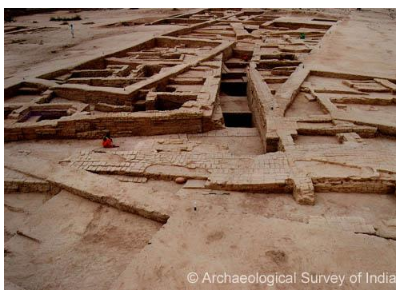
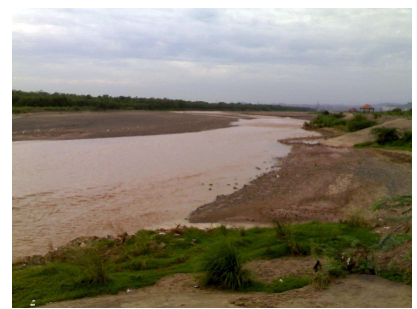
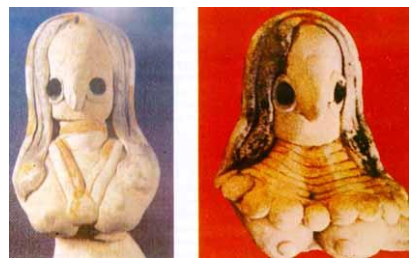
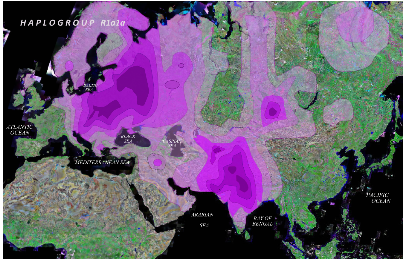
![The R1a* haplogroup which originated in India is at least 18,000 years old [7].](http://indiafacts.org/wp-content/uploads/2017/05/im-4.png)
